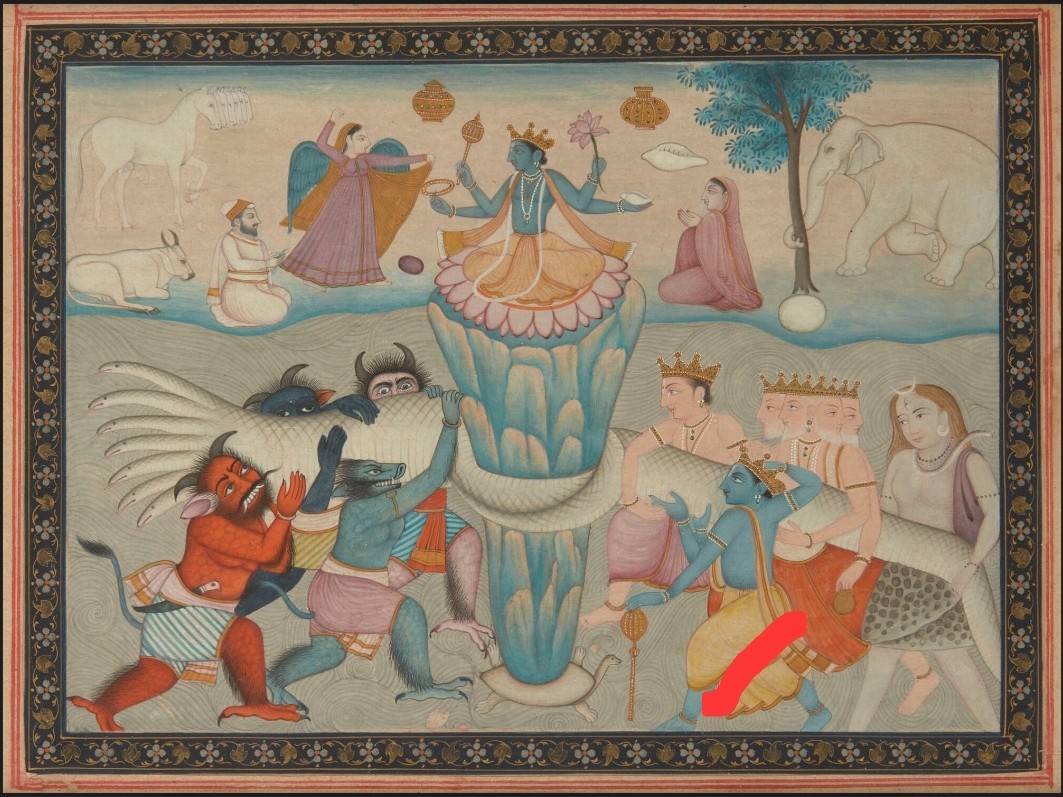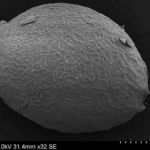Origin stories of Cannabis found in medieval Indian texts such as the Ānandakanda, or that you might hear from Cannabis-inclined sadhus, relate a primordial event called Samudramanthana or The Churning of the Ocean.
There are various versions of this story, but as they pertain to Cannabis and other ‘drugs’ like opium, tobacco, alcohol, and datura, all encode the essential ambivalence of ‘intoxicating substances’ as part ambrosia, part poison.
In one telling, while in search of ambrosia or amrita – the elixir of immortality – the Devas and their eternal rivals, the Asuras, agree to cooperate together in the churning of the primordial Ocean of Milk.
To do so, they overturn Mount Meru, the world axis, wrapping the great Naga serpent Vasuki around the mountain and using him as a churning rope.
Various wonders emerge from the primordial depths, but before the manifestation of the amrita, there appears a terrible poison called hālāhala.
Hālāhala is so virulently toxic that it threatens to destroy creation altogether – until Shiva comes to the rescue, carrying the poison away in his drinking bowl to his cave on Mount Kailash.
Downing the deadly draught, which turns his throat blue before even he – the Lord of Yogis – can apply his power, Shiva transforms the poison into amrita.
Satisfied, signifying his task is done, Shiva overturns his emptied cup. But a few last drops of the hālāhala spill out, draining from the door of his Kailash cave and down the valleys of the Himalaya. From these drops of deadly poison, there originate the first Cannabis plants.
Mount Kailash itself stands in southwestern Tibet, and as the mountain home of Shiva and Parvati – or Chakrasamvara and Vajravarahi – remains pivotal in the sacred geography of Hindus and Tantric Buddhists, the peak once reached on pilgrimage trails from the Brahmin hill town of Almora, passing the temple complex of Jageshwar before crossing the remote Himalayan forests of Kumaon for the Tibetan frontier.
The English term ‘intoxicating’, with its dual sense of toxicity and overwhelming pleasure, nicely captures the same sense of ambivalence wrapped up in this mythic, atemporal genesis.
***






